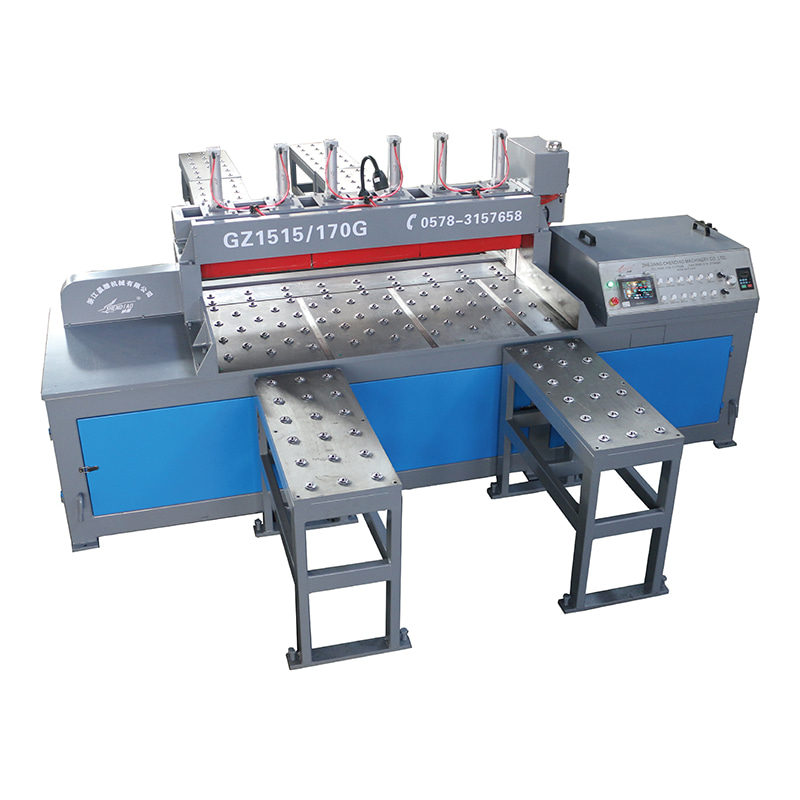NCJ-150 Fully Automatic High-Speed Metal Circular Saw Machine Steel Rod Blanking Machine Sawing Machine
Cat:Hinged Circular Saw Machine
Highly rigid body structure with advanced clamping device, environment...
See DetailsAluminum plates are widely used across industries such as aerospace, automotive, and construction, requiring precise and efficient cutting techniques. Among the available cutting solutions, the Aluminum Plate Cutting Circular Saw Machine remains a popular choice due to its balance of speed, accuracy, and cost-effectiveness. However, alternative methods such as laser cutting and band saws also provide unique benefits depending on the application. Evaluating the advantages and disadvantages of each method is essential for selecting the right technology for specific production needs.

The primary strength of the Aluminum Plate Cutting Circular Saw Machine lies in its versatility and reliability. It can efficiently cut through a range of aluminum thicknesses with minimal operator training. The machine produces clean, straight cuts and requires relatively low maintenance compared to other methods. Its mechanical cutting action is less sensitive to surface reflectivity or material coatings, which can be challenging for laser-based systems. Additionally, circular saw machines generally have lower initial costs and operational expenses, making them suitable for workshops with varying production volumes.
Despite these strengths, circular saw cutting also presents certain limitations. High-precision or complex shapes are difficult to achieve, especially for intricate designs or internal cutouts. The process generates heat and mechanical stress, which can sometimes cause burrs or minor surface deformations. Moreover, for very thick aluminum plates, cutting speed can decrease, and blade wear becomes a concern. Compared to laser or waterjet systems, the circular saw is less suitable for ultra-fine tolerance requirements or materials that are prone to deformation under mechanical force.
Laser cutting offers precision and the ability to create complex patterns material wastage. It is a non-contact process, reducing mechanical stress and producing smooth edges even on thick plates. However, laser systems are highly sensitive to material reflectivity, often requiring coatings or special adjustments when cutting aluminum. The equipment cost is significantly higher than circular saws, and operational maintenance can be complex. For high-volume production of simple cuts, lasers may not provide the cost efficiency of a circular saw machine.
Band saws provide an intermediate solution, capable of cutting thicker aluminum plates with relatively low heat generation. They can produce longer cuts and accommodate larger workpieces than circular saws in some cases. However, band saws typically operate at slower speeds, and the cut edges may require additional finishing. Precision for intricate designs is limited compared to lasers, and blade replacement is more frequent when handling harder alloys or high-volume work.
Selecting the suitable cutting method depends on the production requirements, material properties, and budget constraints. The Aluminum Plate Cutting Circular Saw Machine is ideal for workshops needing consistent straight cuts at moderate thicknesses and low operational costs. Laser cutting excels in precision and complexity, but at higher costs. Band saws offer robustness and suitability for thicker plates but compromise speed and surface finish. Understanding the trade-offs between these technologies ensures that manufacturers can optimize productivity, quality, and efficiency.
The Aluminum Plate Cutting Circular Saw Machine provides a versatile and cost-effective solution for a wide range of aluminum cutting tasks, but it cannot fully replace laser or band saw systems when high precision or specialized requirements are needed. Evaluating the advantages and disadvantages of each cutting technology allows operators to make informed decisions, achieving a suitable balance between performance, quality, and cost efficiency.